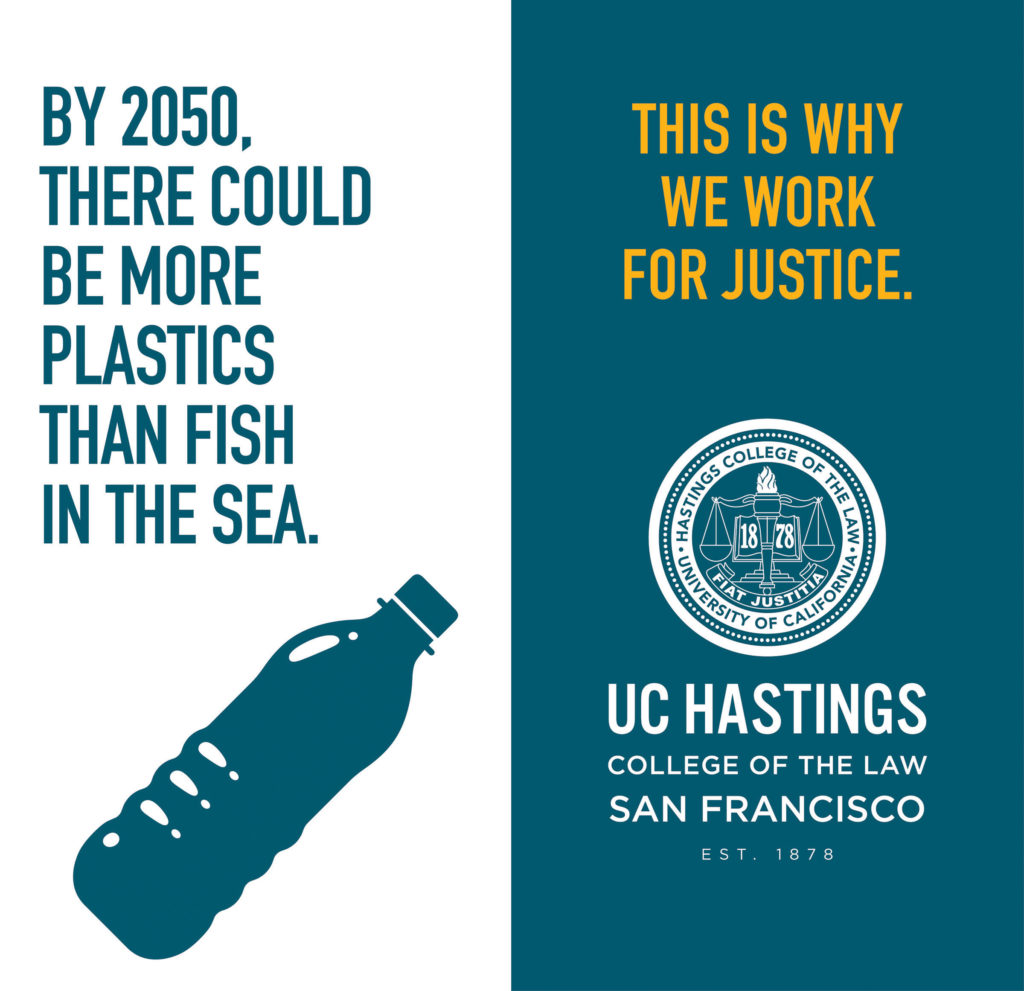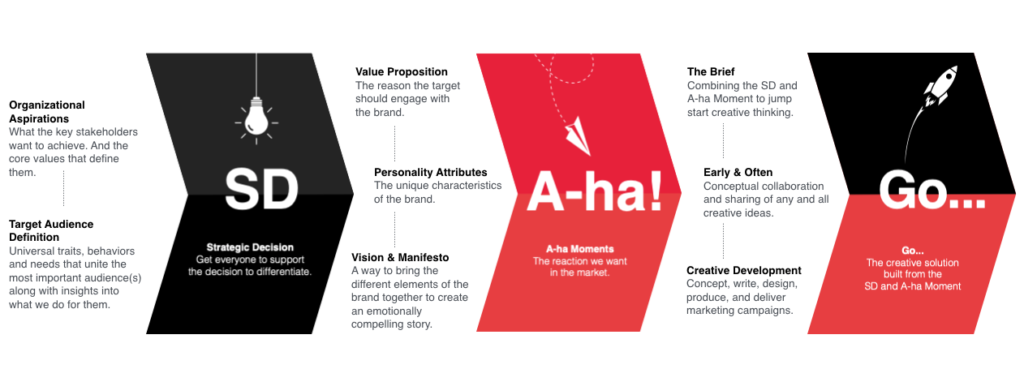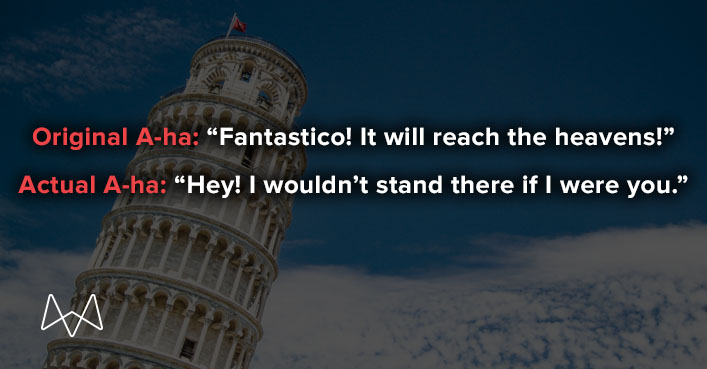
Days after another school shooting, the Daily Caller attacks U.C. Hastings for raising universal questions of justice and the need for strengthened gun control laws.
The University of California Hastings College of the Law’s “For Justice” advertising campaign took center stage last week in the aftermath of the Parkland, Florida school shooting.
The conservative Daily Caller claimed Hastings is violating its charter by asking “political” questions in its advertising.
Looking for a moment beyond the incredibly insensitive timing of the article—published within days of the massacre at Marjory Stoneman Douglas High School, we question the Daily Caller’s central premise – that questions about “justice” are an unacceptable topic to raise…at a law school.
Amber Athey’s article “California Law School Promotes Pro-Abortion Messages” offers this critique:
“The University of California, Hastings College of the Law is promoting left-wing political messages in a year-long campaign that may violate its own policies as a state institution… The law school’s campaign, which began in July of 2017 and is titled “This Is Why We Work For Justice… address[es] that core principle of ‘doing justice’ with questions generated through conversations with our students, faculty, staff & alumni.”
For one portion of the campaign, UC Hastings posted blatantly political statements about abortion, gun rights, immigration and taxes on street poles throughout the city of San Francisco. One such banner claims, “A uterus is more heavily regulated than an assault rifle”
Athey goes on to quote Joseph Shashaty, the student president of Hastings Republicans as:
“Advertising clearly partisan views tells conservatives that Hastings only welcomes those views,” Shashaty explained. “Why else would they commit to paying for those advertisements if counter viewpoints were embraced?” “The so-called ‘For Justice’ campaign sent a clear message: UC Hastings is more interested in controlling the narrative than encouraging dialogue on campus,” he said. “These advertisements are 100% political. They are not based in fact, but they were produced to induce a political reaction.”
From a communications perspective, the Daily Caller’s article does raise an interesting question: When are the merits of a controversial point of view worth a potential backlash?
At Mortar we never stop urging marketers to make smart decisions about their product, and to focus their communications on the “A-ha Moment” their decision provokes.
So, we thought you might be interested in our decision-making process in this particular case.

Hastings is in a tough neighborhood when it comes to competition. U.C. Berkeley’s Boalt Hall to the east, Stanford Law to the south. We weren’t going to coast on our reputation, or outspend either of those Goliaths. So, we studied our client. We worked to understand what, specifically, was different about a Hastings degree. What it was about Hastings that set them apart. What we found was this: Hastings is the oldest law school in the University of California system, with a history of working for justice that goes back 140 years. Most recently it was Hastings lawyers who rushed to SFO to help immigrants navigate the White House’s 2017 travel ban. Hastings grads have always been first on the scene – literally standing up for justice.
If ever there were an A-ha Moment, that’s one.
A program that is forthright in its mission of educating others so they can go on to tackle the most contentious issues of our time attracts a special kind of student. Students who are more likely to be motivated by a social conscience and perhaps just a little less interested in a huge paycheck. Such students will lean towards public practice and the bench—an area of strength for Hastings graduates.
Now that’s not to say Hastings does not graduate attorneys with interests elsewhere. Or indeed, that Hastings is not interested in alternative views or those with challenging opinions. On the contrary, Hastings would be one of the first to declare its interest in students of all viewpoints.
Neither does it imply that students’ views might not change after graduation.
But it does carve out a strong point of view for Hastings the educator: because Hastings is more than just a place to get a law degree. Hastings is bold about its educational mission. And Hastings is not shy about inviting controversy and passion into the classroom.
And that’s an idea worth raising a little hell about. That kind of shoe-leather-on-the-streets approach to justice is an idea worth talking about—in bold, possibly controversial terms.
Did we think it would please everyone? Of course not. Is it proving to be worth it? Absolutely.
Hastings’ tiny, no-budget campaign — executed on their website and supported by a relatively small number of street banners with limited distribution in the city of San Francisco — has generated a massive amount of attention. Posts about the campaign on various social media outlets have generated engagement from nearly 40,000 individuals.
Now, we could easily stop there. We could say “We got our client attention, our work is done,” and pat ourselves on the back. After all, we’re marketers, not policy-makers. But we think the Daily Caller misses the mark philosophically as well as factually.
The campaign does not violate the University’s charter.
It does not misrepresent the truth.

And it is in no way inappropriate for a law school to advertise the fact that it fights for justice – particularly when that law school’s 100+ year-old motto is “Fiat Justitia” – “Let Justice Be Done.”
Some students see “For Justice” and feel connected to an institution that is sympathetic to their desire to change society. Others will be passionate about a particular issue (we heard a lot about women rights from the Hastings’ students we interviewed).
Some are drawn to the possibility of active, passionate debate and a classroom experience that is invigorating and insightful—mimicking the experience of pleading your case in court.
And yes, some are turned off by a tone that might be seen to imply there is a lot wrong about how we sell guns, treat the unborn, what we do with immigrants, or care for our environment. The campaign forces viewers to face uncomfortable truths, and implies that Hastings may force them to defend their views in front of uncomfortable people.
Isn’t that what law school is for?
Our point is this: A-Ha Moments are not without risk.
This one made us all take a deep breath. But in the end, we knew we’d brought the right kind of attention to a client with zero budget and massive competition. We did it honestly. And we did it by bringing our client’s true strengths to the fore. Did the work please everyone? Obviously not. Is that scary? Definitely. Was it worth it? Absolutely. We’re grateful for a client willing to take risks. For an opportunity to stand up for the idea of justice. And for the chance to prove that great ideas don’t need a huge budget to have a huge impact. That’s what A-Ha Moments can do.
See the entire campaign here.
The views expressed here are my own (Mark Williams, the CEO and Founder of Mortar). They do not necessarily reflect the views of U.C. Hastings or the Mortar team.









